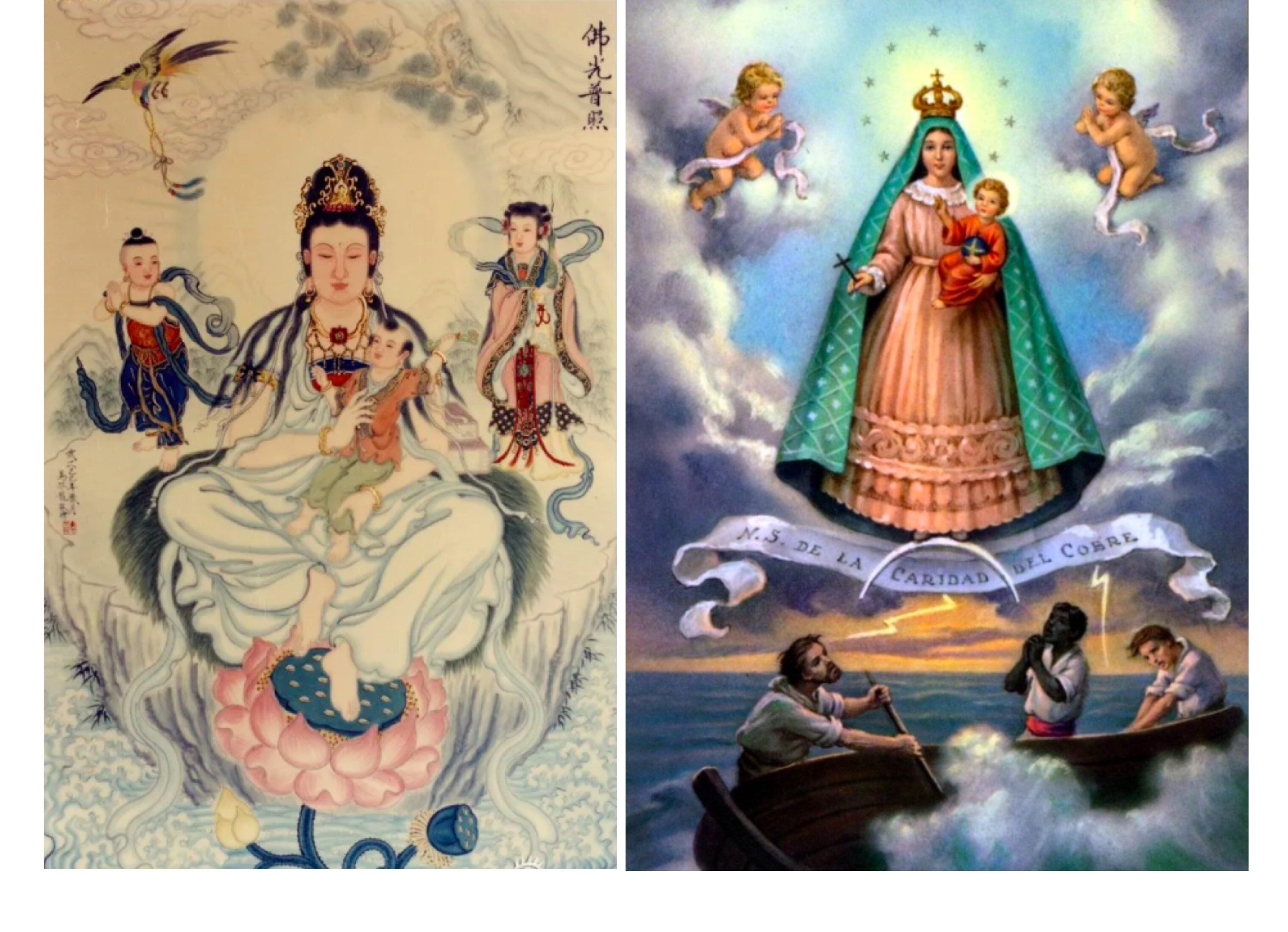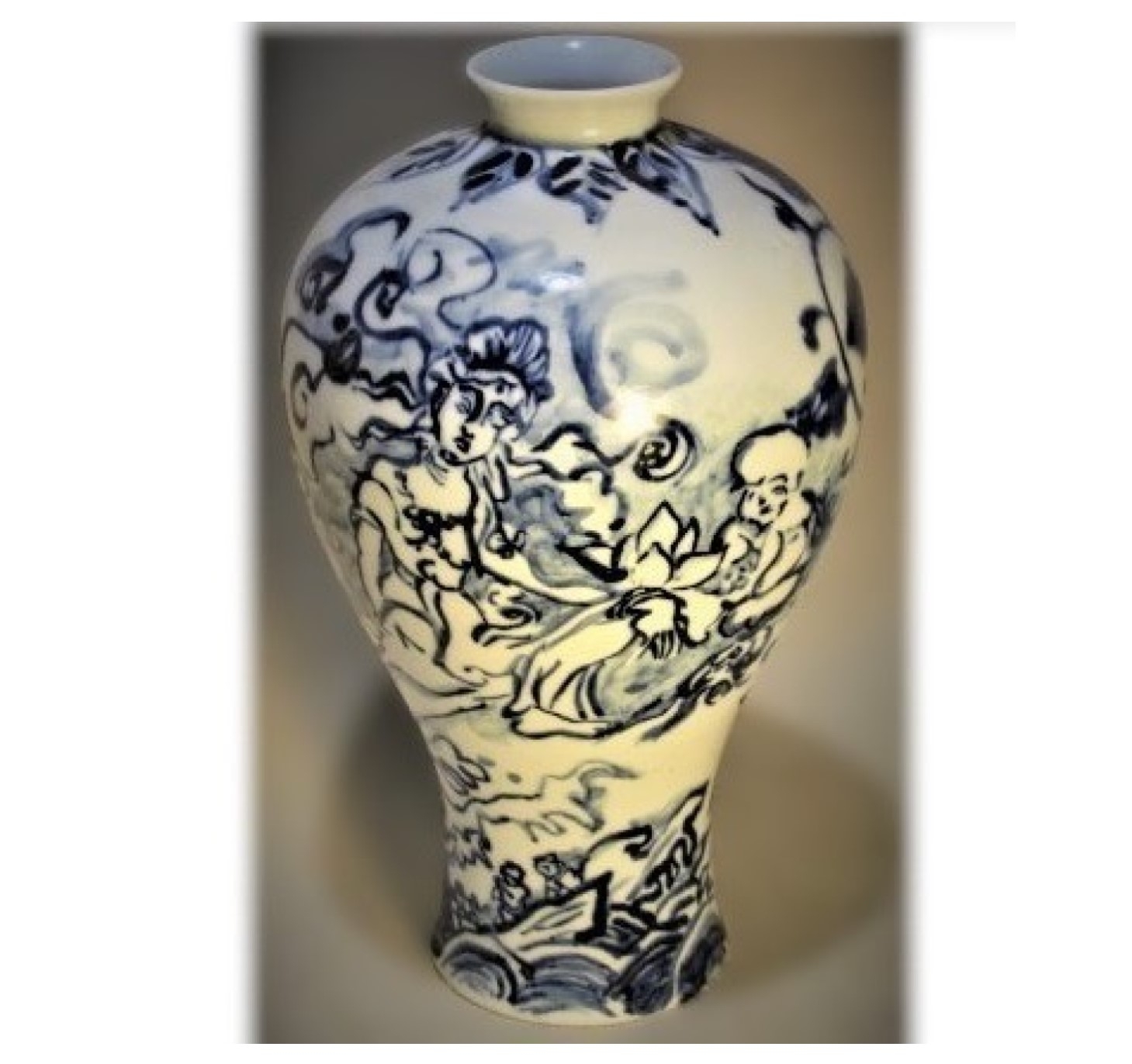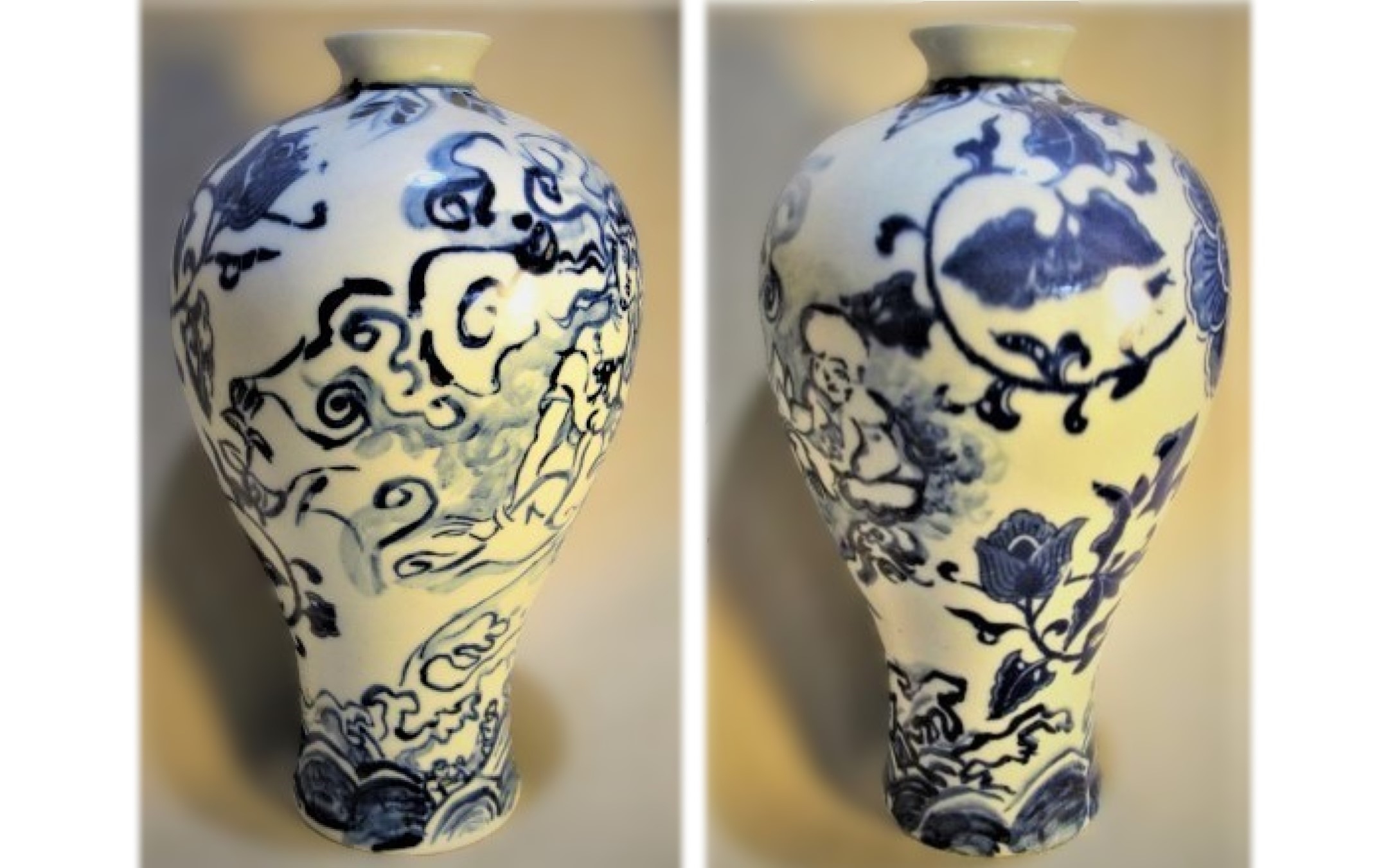That Uncanny Resemblance Between Two Mothers
Tell Me You See It Too? Am I imagining things, or does Cachita's figure floating in Cuban waves mirror Goddess Guanyin emerging from Jingdezhen's kiln mist?

Just as cobalt fuses to porcelain in the fire's embrace, these icons bond across oceans—one found by fishermen, one painted for temples, both cradling sacred children. You see it, right?
Don't These Blue Lines Look Familiar?
Look closer at my vase. Those swirling cobalt waves—aren't they the same tempest that threatened Cachita's three fishermen? The same chaos Goddess Guanyin calms with a lifted hand? The kiln's 1300°C heat melded more than glaze; it married these stories in permanent blue. Cosmic coincidence or divine design?

Hold On—Since When Do Saints Share Closets?
Goddess Guanyin's lotus throne, Cachita's golden halo—both glow against Jingdezhen blue. Like glaze bonding to clay in the kiln's transformation, their iconography fused: Christ child and baby Buddha sharing that same knowing smile. The fire doesn't discriminate between east and west—it only creates.

Two Cultures, One Unshakable Alchemy
Cuban copper and Chinese clay. A virgin dried by miracle, a goddess fired to permanence. Just as the kiln's alchemy turns dust into treasure, these stories transmuted across oceans. You're telling me this parallel isn't alchemy? That maybe the divine kiln-master planned this glaze fusion all along?
Next time you see blue-and-white porcelain, remember: it might be hiding a Cuban heartbeat under that glaze.
